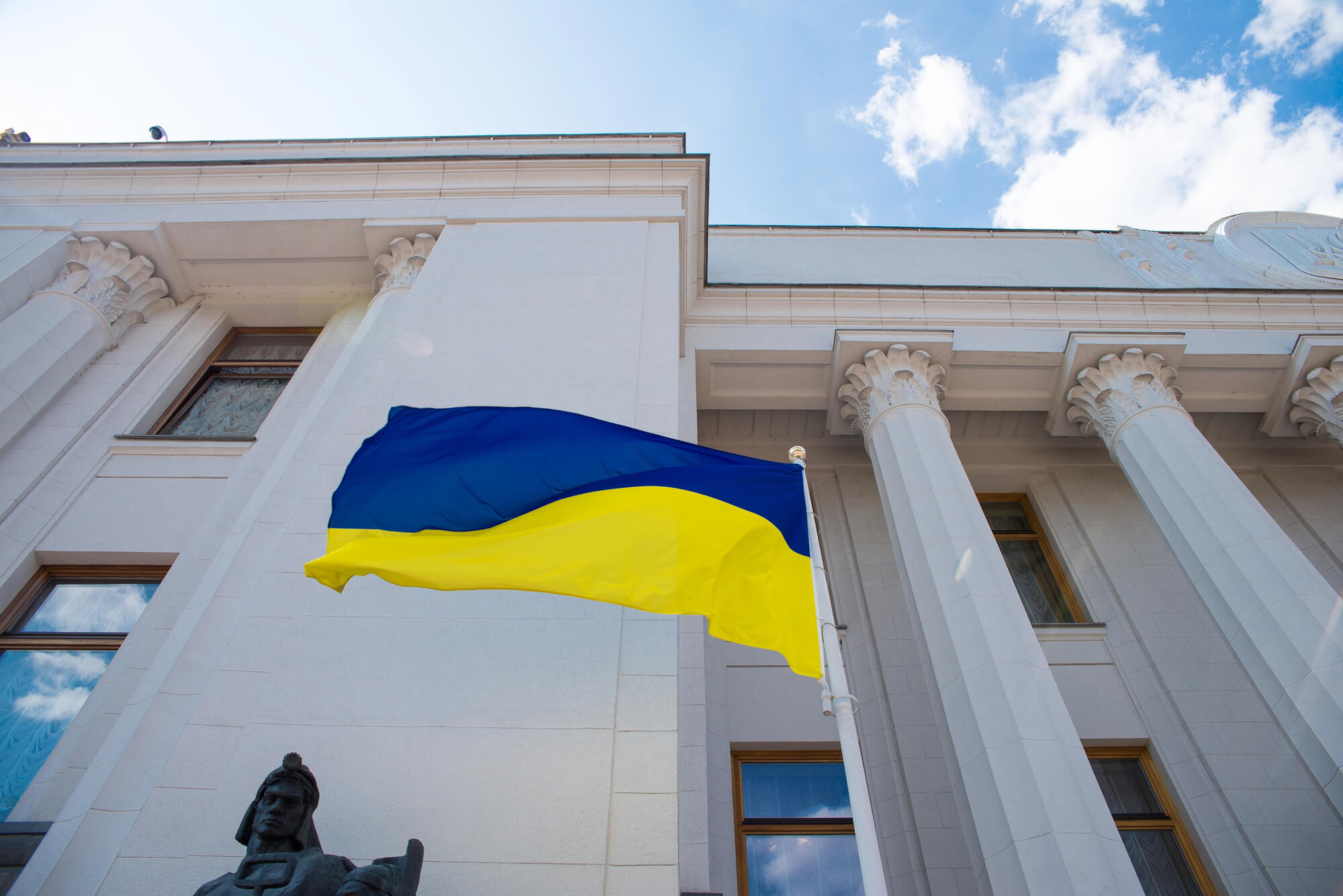As part of the IX Annual Research Conference, “Economic and Financial Integration in a World of Shocks and Fragmentation”, a panel discussion entitled “Financial Sector Reforms on the Path towards EU Accession — Aligning with EU Legislations and Getting the Reporting Right” took place.
Participants in the discussion included Giancarlo Pellizzari (European Central Bank), Sergiy Nikolaychuk (National Bank of Ukraine), Wolfgang Buecker (GIZ), Mihnea Constantinescu (National Bank of Moldova), Sanja Petrinić Turković (Croatian National Bank), as well as Andriy Dubas (Association of Ukrainian Banks) and Ruslan Grytsenko (Independent Association of the Banks of Ukraine).
The discussion was chaired by Tony Deary, Director at GBRW.
“The topic of our session is deceptively simple. It’s about harmonization. But harmonization — especially in the context of financial reform — goes far beyond legislative transposition. It’s not just a checkmark in an [EU] directive checklist. It’s a functional shift in how financial institutions operate and how supervision is conducted”, he noted in his opening remarks.
Sergiy Nikolaychuk, Deputy Governor of the National Bank of Ukraine, recalled that as early as 2015, the regulator clearly declared its course toward integration with the European System of Central Banks, which served as a catalyst for intensive change: “As early as 2015, we clearly stated that the NBU aspires to become part of the family of European central banks. This became a turning point in accelerating our alignment with EU standards”.
To date, Ukraine has achieved 75% equivalence in banking sector regulation with EU requirements. At the same time, much work remains in the nonbanking segment. The regulator currently faces the challenge of balancing reforms with financial stability: “In the long term, these goals are not in conflict, but in the short term, the trade-offs can be painful”, he explained. “We need to avoid placing excessive burdens on market participants while maintaining the pace of reform. This is especially important given our ambitious goal — full implementation of EU financial legislation by the end of 2027”. The harmonization process is further complicated by the fact that European legislation is continuously evolving. As a result, Ukraine must not only achieve compliance but also sustain it under conditions of ongoing change.
Mihnea Constantinescu, Deputy Governor of the National Bank of Moldova, noted that in his country, the impetus for modernization came from a shock — the banking crisis of 2014-2015: “Ukraine and Moldova share not only geography but also history. Both countries went through financial catastrophes, a loss of trust, and had to rebuild their regulatory systems from scratch”, he said. Even before obtaining candidate status, Moldova had begun implementing EU standards in supervision, resolution, payment systems, and anti-money laundering.
Constantinescu added that technology enables candidate countries to shorten the path to the EU. One breakthrough solution was the instant payment system MIA, launched by the National Bank of Moldova.
“These payments allow small businesses to accept payments without terminals — just by using a QR code. It’s transparent, convenient, and helps bring transactions out of the shadows”, he noted.
At the same time, he drew attention to the issue of trust, which lies beyond the scope of regulation: “Will a citizen with a second passport choose to keep their money in a Moldovan bank if another country offers significantly stronger protection [for their funds]? This is a matter of trust…”.
Sanja Petrinić Turković, Executive Director of the Prudential Regulation, Methodology, and On-Site Supervision Area at the Croatian National Bank, emphasized that digitalization is transforming the financial ecosystem: the role of nonbank players is expanding, deposit mobility is increasing, and competition between jurisdictions is intensifying.
“If the deposit guarantee limit is not raised to €100,000 or a transitional period is not introduced, deposits may simply ‘flee’ to other jurisdictions. This has become possible thanks to new technologies”, she noted.
Ms. Turković also shared lessons from Croatia’s adaptation to EU norms following accession. Despite the complexity of the regulatory framework, many EU documents include provisions for simplifications and exemptions, particularly for small banks: “If you know where to look, you can find opportunities for simplification in almost every document. The problem is, most market participants don’t even realize they exist”, she explained.
National regulators have the right to apply options and discretions (“O&Ds”) — that is, to adapt European rules to the specific characteristics of the local market. A thorough analysis of regulatory documents, therefore, allows for the development of a strong negotiating position, as Croatia demonstrated.
“The industry sometimes sees certain risks more clearly than the regulator. We listened to everyone. But in the end, echoing Frank Sinatra, we did it our way”, she said.
Giancarlo Pellizzari, Head of the Banking Supervision Data Division at the ECB, also addressed the practical side of EU rule implementation. He recalled the creation of the Single Supervisory Mechanism (SSM). Before its launch, the ECB operated with a large number of national approaches, which carried the risk of fragmentation.
“When the SSM was being established, we were dealing with dozens of national regulators operating in different ways: different systems, different data requirements, different supervisory cultures. This created a risk that the same situation could be interpreted differently in different countries”, he explained.
In response, the ECB introduced the so-called “sequential approach”. Under this model, a bank submits its data to the national regulator, who has no more than one hour to automatically forward it to the ECB.
“Previously, national regulators had up to 10 business days to forward the data. Now it’s just one hour. It’s expensive, but necessary. We can now operate as a single entity”, Pellizzari emphasized.
Wolfgang Buecker, Head of the GIZ technical assistance program, offered a more practical and even critical perspective on reform: “We often hear about ‘big goals’, but we forget about the institutional ‘plumbing’. Without coherent processes, qualified personnel, and a clear understanding of risks no directive will work”.
He presented the Step In 2 EU program, funded by the German government and aimed at identifying specific bottlenecks in the harmonization process. “We’re here not to offer generalities but to be precise: where exactly the secondary legislation isn’t functioning, where there are staffing gaps, where processes are flawed. That’s our role — technical experts with a wrench”.
Buecker also warned of the risk of “regulatory overheating”, when the volume of reforms becomes excessive and places undue pressure on the market:
“Regulatory activity must be aligned with market capacity. Otherwise, we risk a situation where banks are occupied solely with responding to supervisory requests — instead of financing the real economy”.
Andrii Dubas, President of the Association of Ukrainian Banks, delivered a similar message. He emphasized that the market does not resist regulation, but it demands predictability: “We’re not against rules — we’re against chaos. We need a roadmap that shows where we’re going, in what stages, which rules are being introduced, and under what conditions”. According to him, we have shown resilience throughout the ongoing war and remain ready for European integration, but expect recognition of objective constraints: “We are ready to move toward the EU, but we expect an understanding that adaptation takes time and resources”.
In closing, Ruslan Grytsenko, Executive Director of the Independent Association of the Banks of Ukraine, emphasized the need to focus not only on formal compliance but also on the substance of regulation. According to him, the Ukrainian banking sector is committed to operating in line with European principles such as transparency, fair competition, and the protection of clients’ rights.
The panel discussion demonstrated that reforms on the path to the EU are not a technocratic exercise, but a complex transformation. Their success depends not only on legislation but also on the ability of regulators, experts, and the market to act jointly, adaptively, and responsibly.
Photo: depositphotos.com
Attention
The author doesn`t work for, consult to, own shares in or receive funding from any company or organization that would benefit from this article, and have no relevant affiliations



